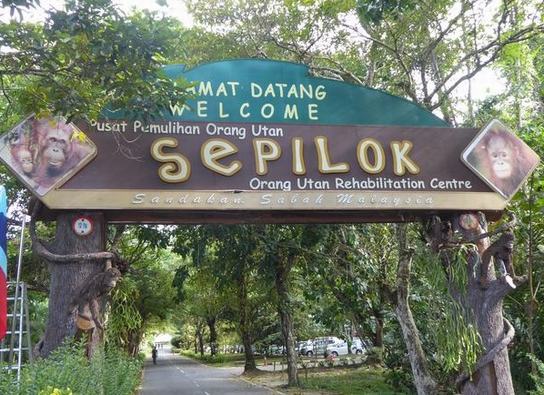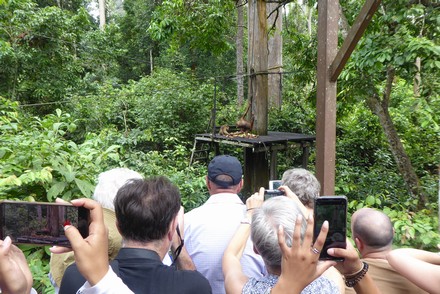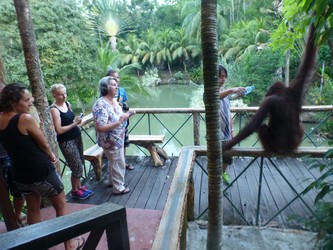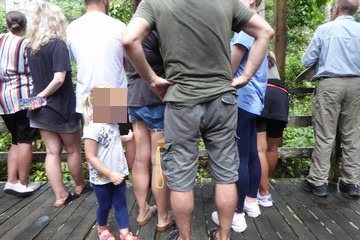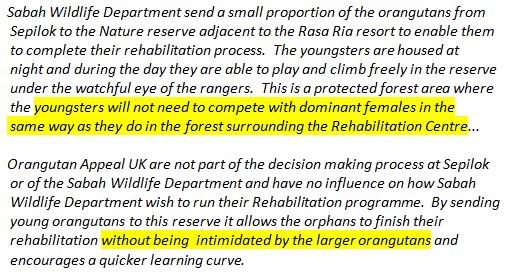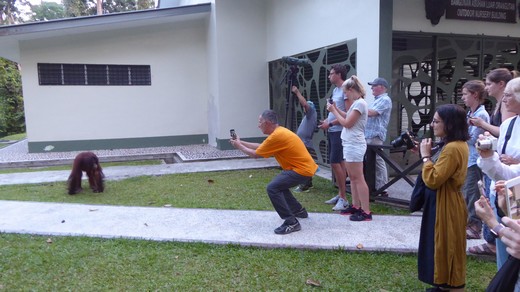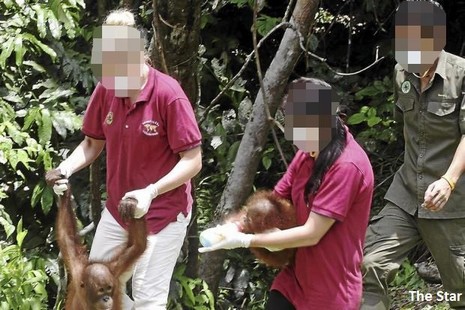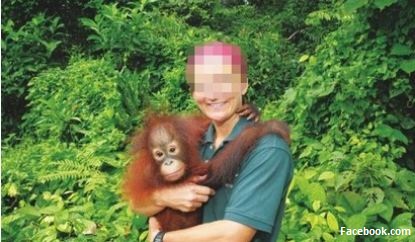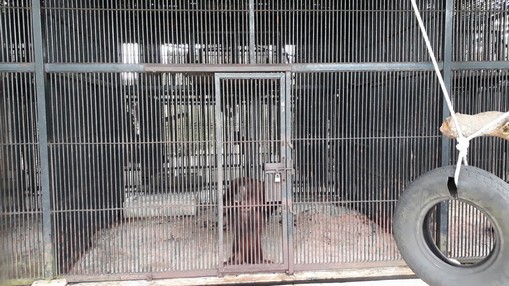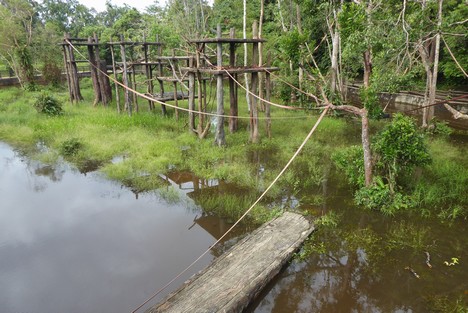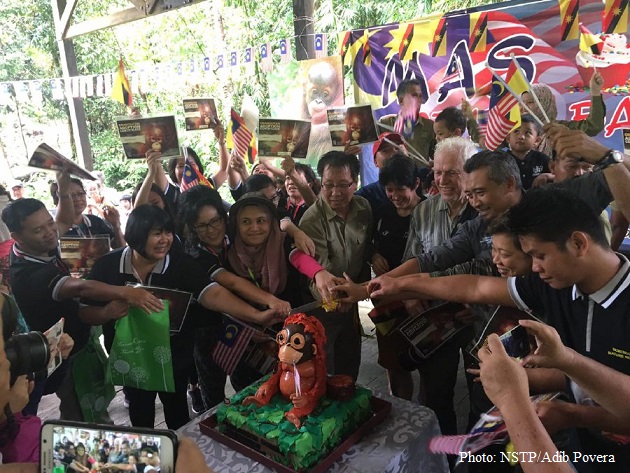Below is the reply from Sentoria, the owner of Langkawi Nature Park and Bukit Gambang Safari Park, to FOTO’s director on 12 July. This are the explanations to reports and opinions on the chimps. The presss statement referred to below by Sentoria can be found at this link – https://www.facebook.com/LangkawiNaturePark/photos/a.1924629304456045/1967336520185323/?type=3
——————-
Thu 12-Jul-18 12:28 AM
Dear Mr. Upreshpal Singh,
We appreciate your concerns of the animal welfare and we assure no such misappropriate actions were done to our animals as the company has heavily invested to build zoos with proper licence obtained from the authority, obliging in conserving the wild life and adhering to any rules and regulations from the local authorities under the wildlife 2010 Act / Act 716.
The allegations on Sumomo, the 19-year old Chimpanzees being shot dead is not true. All relevant technical reports have been submitted to the investigation team from Jabatan Perhilitan Negeri Kedah. A press statement was also post in the social website to share the news transparently. The press statement is attached.
We recently had Perhilitan and MAZPA representatives visited and audited our Chimp’s enclosure & exhibit and we are glad all had met the requirements with minor additional or changes that has been addressed immediately. On the post-mortem report of the dead chimp sadly to say we cannot provide to public or any other parties as a full report was submitted to Perhilitan.
We hope the explanation will provide a peace of mind to you and parties concern on this matter.
Thank you.
Yours sincerely,
Karen Tan
Communications Department
Sentoria Themeparks and Resorts Sdn. Bhd.
On Tue, Jan 9, 2018 at 5:57 PM Upreshpal Singh <REDACTED> wrote:
Dear Dato Gan,
We hope to hear from the Sentoria management regarding our email on 2nd January, this week.
We have received news from Langkawi island that there are chimps at Sentoria’s new zoo, Langkawi Nature Park and we believe that these chimps were transferred from Bukit Gambang. However, there are only two chimps at LNP. May we know what has happened to the third chimp? If this chimp is dead, may receive its post mortem report and photos.
Thank you.
Sincerely,
Upreshpal
Upreshpal Singh
Director
www.fotomalaysia.org
Sign the petition to help save Lasah the elephant
From: Upreshpal Singh [REDACTED]
Sent: Tuesday, January 02, 2018 21:11
To: REDACTED
Cc: REDACTED
Subject: Bukit Gambang Safari Park – chimpanzees
To: Dato Gan Kim Leong
Managing Director,
Sentoria Group Berhad,
56 & 58 Jalan Dagang SB 4/2,
Taman Sungai Besi Indah,
43300 Seri Kembangan, Selangor DE
Dear Dato Gan,
With reference to the treatment of three chimpanzees at the Bukit Gambang Safari Park, we are forwarding a letter on behalf of the Pan African Sanctuary Alliance [PASA] as per attached in this email. Will the management of Sentoria GB inform us if it will agree to rehoming the chimps to Africa? Our organisation joins the call by PASA to rehome the chimps to Africa.
Besides, may we also know the current status of the three chimps?
Looking forward to hearing from the management. Thank you.
Sincerely,
Upreshpal
Upreshpal Singh
Director
www.fotomalaysia.org
Sign the petition to help save Lasah the elephant
—————————
Below are all the emails sent to Sentoria before they replied on 12 July 2018.
Thu 24-May-18 12:53 AM
Dear Dato Gan,
Since my last email on January 20 [as per below] we have not received a reply from the management to our requests regarding the treatment of the chimps, now at Langkawi Nature Park [LNP]. We hope the Sentoria management will furnish us with the details we have requested previously.
In February our organisation contacted several staff members of Sentoria with regards to the alleged shooting of Sumomo the chimp at LNP. The staff contacted refused to comment on Sumomo’s fate and informed us to contact Dr. Adznan, though to our disappointment he never answered/returned our calls and text. Several days after our attempts on getting clarification on Sumomo, LNP finally admitted on its Facebook page that Sumomo has indeed died; albeit from kidney issues. With reference to our request on January 9, can the management please provide photos of Sumomo’s corpse and post mortem report[s]?
We are also awaiting evidence [photographic and data sheets] that while the chimps were at Bukit Gambang Safari Park they were given [daily] access to an enclosure.
We’re looking forward to hearing from your management.
Thank you.
Best regards,
Upreshpal
Upreshpal Singh
Director
www.fotomalaysia.org
Sign the petition to help save Lasah the elephant
From: Upreshpal Singh [REDACTED]
Sent: Saturday, January 20, 2018 04:33
To: REDACTED
Cc: REDACTED
Subject: RE: Bukit Gambang Safari Park – chimpanzees
Dear Dato Gan,
Further to our previous emails, may we know please if the three chimpanzees who were at Bukit Gambang Safari Park were never released into an enclosure while at the zoo, as mentioned in this article in December? If they were may we please receive evidence including photos of the chimps in the enclosure and data sheets? We would also appreciate other information including the diet data sheets of the chimps at Bukit Gambang.
Thank you for your kind cooperation.
Kind regards,
Upreshpal
Upreshpal Singh
Director
www.fotomalaysia.org
Sign the petition to help save Lasah the elephant
From: Upreshpal Singh [REDACTED]
Sent: Tuesday, January 09, 2018 17:57
To: REDACTED
Cc: REDACTED
Subject: RE: Bukit Gambang Safari Park – chimpanzees
Dear Dato Gan,
We hope to hear from the Sentoria management regarding our email on 2nd January, this week.
We have received news from Langkawi island that there are chimps at Sentoria’s new zoo, Langkawi Nature Park and we believe that these chimps were transferred from Bukit Gambang. However, there are only two chimps at LNP. May we know what has happened to the third chimp? If this chimp is dead, may receive its post mortem report and photos.
Thank you.
Sincerely,
Upreshpal
Upreshpal Singh
Director
www.fotomalaysia.org
Sign the petition to help save Lasah the elephant
From: Upreshpal Singh [REDACTED]
Sent: Tuesday, January 02, 2018 21:11
To: REDACTED
Cc: REDACTED
Subject: Bukit Gambang Safari Park – chimpanzees
To: Dato Gan Kim Leong
Managing Director,
Sentoria Group Berhad,
56 & 58 Jalan Dagang SB 4/2,
Taman Sungai Besi Indah,
43300 Seri Kembangan, Selangor DE
Dear Dato Gan,
With reference to the treatment of three chimpanzees at the Bukit Gambang Safari Park, we are forwarding a letter on behalf of the REDACTED as per attached in this email. Will the management of Sentoria GB inform us if it will agree to rehoming the chimps to Africa? Our organisation joins the call by REDACTED to rehome the chimps to Africa.
Besides, may we also know the current status of the three chimps?
Looking forward to hearing from the management. Thank you.
Sincerely,
Upreshpal
Upreshpal Singh
Director
www.fotomalaysia.org
Sign the petition to help save Lasah the elephant




